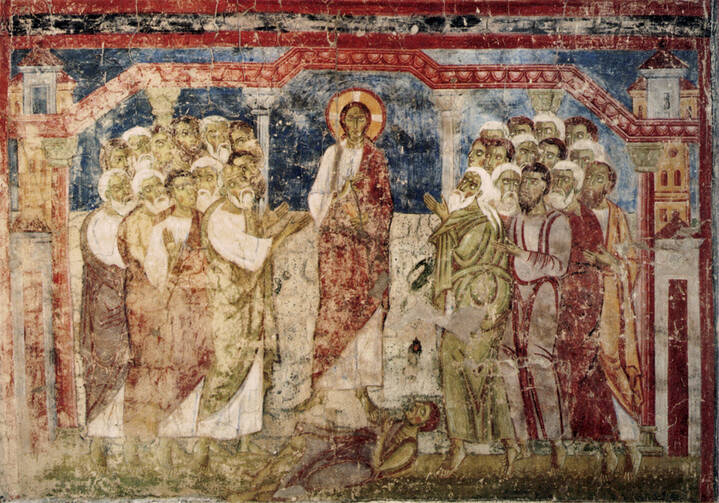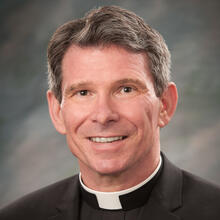A Homily for the Fifteenth Sunday in Ordinary Time
Readings: Deuteronomy 30:10-14 Colossians 1:15-20 Luke 10:25-37
Who was Jesus? Who is he? The Princeton scholar of religion Elaine Pagels links those two questions in her newest work, Miracles and Wonder: The Historical Mystery of Jesus(2025). And rightly so, because the two answers necessarily hang together.
If Jesus is only one of countless men and women who illumined the world with their teaching, then we are free to respond to his insights as we see fit. Either we do or we do not find them helpful.
But if Jesus was more than an ancient teacher, if he was God come into history as savior, then everything changes. This Jesus would demand more than our acknowledgment; he would come laying claim to our lives, the submission that creatures owe to their creator. For what would it mean for a stream to deny its source?
Pagels is a superb popularizer, but the problem with her enduring project is contained in her opening promise to her readers: “We will go back and recover, as far as possible, what actually happened.”
There is nothing new here. Indeed, the quest for “what actually happened” is as old as the Enlightenment. It is as doomed as it is decrepit, and for so many reasons.
First, because all history is determined by the questions we put to it, which is why we never stop writing about even such well-documented events as, for example, our two world wars. New times create new questions, which we then pose to old, even ancient, sources. The past does not alter, but what we make of it never stops changing. There cannot be a final answer to the perennial question, “What really happened?”
Second, when it comes to the ancient world, most of what happened then is as hidden to us now as a vast, dark forest is from a flashlight. The little we know of the ancient world comes to us by way of its remains, especially archaeology and ancient writings, though even these can sometimes produce new insights when they are reinterrogated.
Written texts differ from archeological digs in one essential way. We always write for a reason. We have a perspective, even a prejudice, if you will. The same is true of Pagels, who opens her book with two provocative assertions. They are intended to entice the somewhat learned secular reader, but they are only news for those who have never considered Christ with informed intelligence.
The first assertion is that the Gospels are, at best, second-generation reports. They were not produced, at least directly, by intimates of Christ.
But we knew that even before the Enlightenment. No scoop here; the evangelists themselves tell us as much.
The second provocative assertion assails what believers take for granted: that the authors of the New Testament were rightly convinced that Jesus was not only the promised Jewish Messiah but also God in our midst, a savior come in the flesh.
Pagels hurls herself against this bulwark in all her work: Maybe the evangelists and St. Paul, who predates them, were wrong. Maybe they mistakenly divinized Christ.
If so, then we are free to make of him what we will. If Christ is not divine, then the church is not his continuing presence in our midst, a work of the Holy Spirit. It becomes simply an interest group with an outdated, and perhaps dangerous, agenda.
How accurately Pagels reads her audience! You do not become a bestseller in any other way. She searches the Scriptures for a Jesus who precedes the church, for we should rightly recognize that the men and women who produced the New Testament were just that, the church.
In terms of Pagels’s two questions—Who was Jesus? Who is Jesus?—the first Christians had no doubt who Jesus had been for them because they knew who Jesus was for them. He was the one who lived forever, who was present when they gathered and who led them to proclaim and record what they did.
St. Paul speaks for these men and women when he declares:
Christ Jesus is the image of the invisible God,
the firstborn of all creation.
For in him were created all things in heaven and on earth,
the visible and the invisible,
whether thrones or dominions or principalities or powers (Col 1:15-16).
Here, the apostle is most probably quoting a profession of faith that he inherited, so he is certainly speaking for the very first Christians, who had no doubts about the identity of Jesus, past or present.
Pagels first made her mark with her writings on the Gnostic gospels. She has always believed that they open an alternative door, one which the early church closed for us. She’s right. They do indeed do that. But the early church did not simply close that door; it correctly slammed it shut.
The Gnostic gospels were largely rediscovered in the 20th century. They were written by those who rejected the consensus of the church catholic, the universal church, in favor of a secret knowledge given only to a few enlightened ones.
Read them if you like, but do not glaze over the fact that they were initially lost to history because they were rejected by this same church catholic, which in essence said, “What you read herein, this is not our Christ, in whom
all the fullness was pleased to dwell,
and through him to reconcile all things for him,
making peace by the blood of his cross
through him, whether those on earth or those in heaven (Col 1:19-20)
Pagels herself notes that Jesus would not have been executed by the Romans or the Jews if he had simply claimed to be the Messiah. Jewish leaders might have judged him to be incorrect, perhaps even stoned him for his mistake, but being wrong about who the promised Messiah might be did not constitute blasphemy against the living God. Likewise, the Romans only had reason to execute someone who, in claiming to be the true God above all others, challenged the very authority of the empire.
When all the evidence is shifted—even by academics who make their mark by shuffling through it one more time—we come full circle. What the church claimed of Christ, what she continues to proclaim, is what he said of himself. There is no gap between Christ and the church to be exploited, and the Scriptures, which the church accepted, show this.
Those the church rejected were composed much later, which, as Pagels knows, automatically raises questions about their accuracy. Most importantly, they convict themselves of error by their denigration of the material world, of women, of the uneducated, of God come in the flesh on behalf of all these.
Who can say when the church’s mission will end? She may yet have centuries faithfully to preach what she experienced in Christ. Yet how ironic that she again faces an ancient opponent: Gnostics, the self-illumined, who say that her savior and his church can make no claim upon them because they can access their own Christ, one who fully corresponds to their insights and their prejudices. In short, to themselves!
Pagels gets the questions right. Who was Jesus? Who is Jesus? If Jesus was only of our world, he remains no more than a single part of it. We are free to make of him as we will.
But if Jesus came from outside our world, if he addressed it as only its creator and savior could, then we owe him our love, our submission, our very selves. And we owe all this within the same church catholic that first and last proclaims him, that came to birth from his wounded and then resurrected flesh. And none of this is based entirely upon the testimony of others, past or present. Our hearts, like those that preceded us, give witness to a living, saving Christ.








